Project 3: Ray Tracer
name: Ben Allan-rahillSPP
Description
Describe your ray tracer here. This will include a discussion of any research you did to implement the features you chose. For example, how did you compute the background color from an image? How did you texture your objects? How did you calculate the intersection point for more complicated shapes?In my ray tracer, I attempted to implement BVH. To do this, I followed Peter Shirley's 'Ray Tracing: The Next Week' and translating his C++ code into my Javascript implementation. The BVH implementation works by calculating a bounding box for every object in the scene. In the checkpoint examples, the objects would be the spheres and with a triangle mesh, the objects are the individual triangles. These objects are the leaves of the bounding volume hierachy. To construct the entire hierachy, we compose each bounding box into higher-order bounding boxes. This constructs a tree like structure that can be used to traverse the objects in the scene much more quickly than our class implementation.
Results
Describe the scenes you set up and include sample images your ray tracer generates for these scenes. You must include images that demonstrate the ability of your ray tracer to render images similar to the "checkpoint" images. You should also include any images your ray tracer produces for the features you added.I set up the basic scenes described in the checkpoints. On top of that, I rendered a glass-fox, and a diffuse Tesla cybertruck (using BVH).
Checkpoint 1
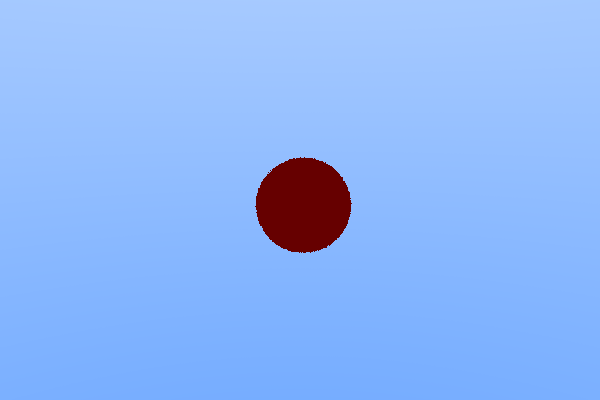
This scene is a very basic sphere with no material. With no material, no shading is done so all that is returned for each pixel is the background or the base color of the sphere.
Checkpoint 2
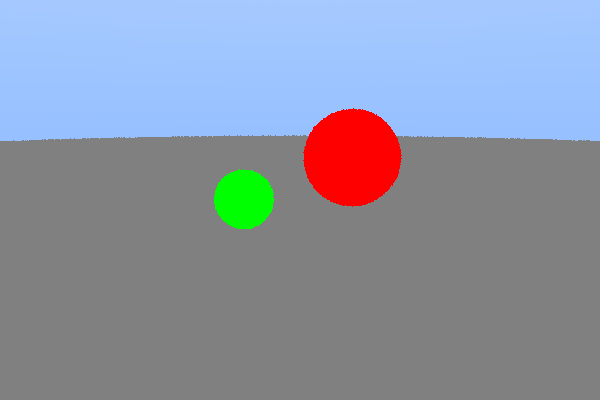
In this scene we iterate over multiple obects to render multiple spheres. For this scene we need to make sure that we are checking our t parameter value to make sure that it is within our tmin and tmax. We also need to make sure that we are returning the closest intersection point.
Checkpoint 3
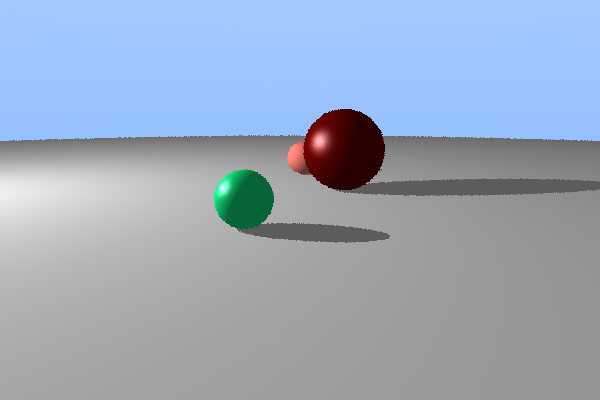
In the third checkpoint, we added the Phong shading model. This uses the intersection point, the outward normal, and the direction to the light to calculate the diffuse and specular components of the color. This is then added to the ambient color that is returned by default. This Phong shading occurs only if there is nothing between the intersection point and the light. If there is an object blocking the ligtht, then we just return the ambient color. This gives us shadows.
Checkpoint 4
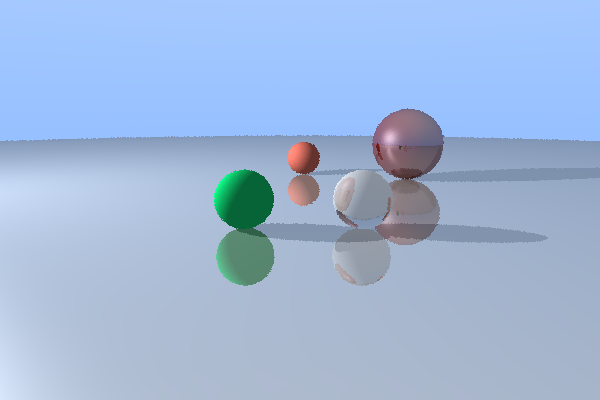
In the final checkpoint, we added reflective and refractive materials. This implements recursive ray-tracing to determine what color should be rendered by a reflected or refracted ray.
My Scene
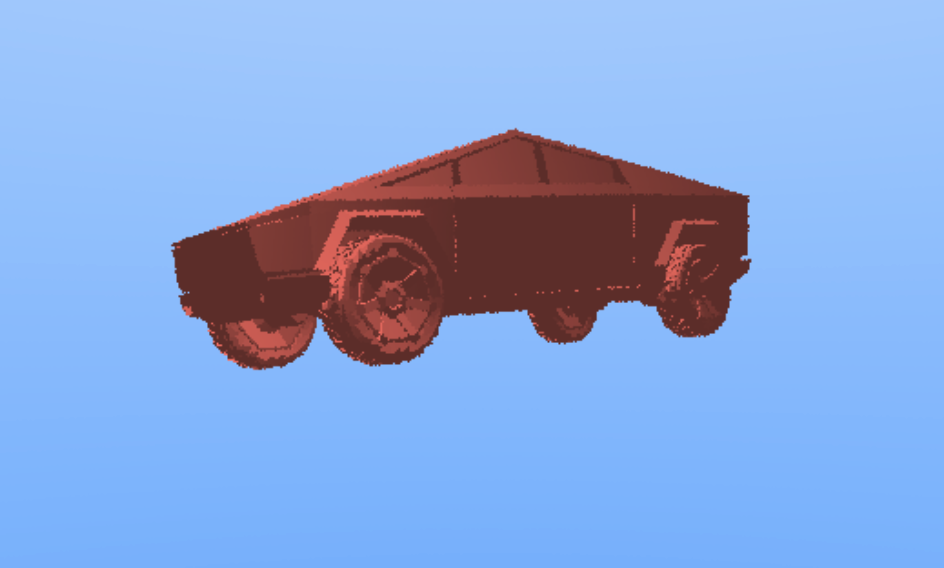
For my scene, I implemented BVH to render a cybertruck with 10K triangles. The photo above is the truck at 1ssp, so there are a lot of jaggies.